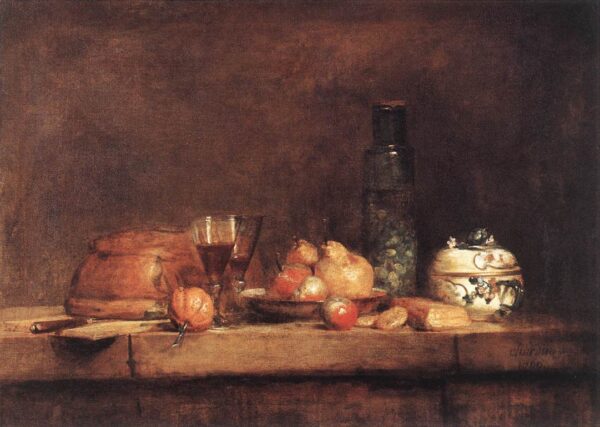
Wine has been an integral if not always necessary element of many of the world’s cuisines for a very long time now. Those intrepid proto-vintners of the Caucasus, the Georgians, assert that they’re working on their 8000th vintage (give or take a happy hour or two), a claim which places the origins of winemaking in the early neolithic era.
Evidence exists that the Chinese were in the game as far back as 3000 BCE, a millennium or so earlier than the first documented fermentations in the Nile Delta. Wine was a ritual beverage at the courts of the great cereal empires of the ancient Near East for ages before being banished — or driven underground — by the rise of Islam in the region.
We know about the Greeks and Romans, of course, because they are the direct antecedents of modern Western wine culture, but it’s worth noting that classical-era wine practices differ markedly from our own. In that era wine was almost never drunk neat but was always mixed with water and generally consumed after, rather than before or during meals, at male-only drinking parties called symposia. The sterner sort of Roman husband thought it improper for his wife to drink wine at all.
If we define cuisine as a more or less durable socially-constructed schema for preparing and consuming food, the places we assign to various comestables assume importance. Some examples (drawn from our own culture) might be (i) that the sweet course marks the end of the meal (we call it dessert); (ii) that a salad may be positioned as a first course and thereby function as an appetizer, or make its appearance after the main course as a kind of palate-cleanser; (iii) that a proper main course requires a starch, a vegetable, and a protein (or at least 2 out of 3).
You might jump up a level and observe that behind these conventions are some important prior assumptions, namely that the cuisine in question actually recognizes such things as appetizers, main courses, palate-cleansers, and desserts.** Like a language, a cuisine has a grammar that may fun to bend and even occasionally break, but which from day to day enjoys the status of a familiar and stable convention. It seems fair, then, to ask where wine fits into all this. What is its place at the contemporary table?
I know at least one person — the former director of beverage programs for a notable Boston restaurant group — who maintains that wine isn’t something to be considered outside the context of a meal. In his view wine’s sole reason for being is to busy itself with underscoring impressions made by food. In other words, wine’s proper role is similar to the cuisine category we usually refer to as condiment.
Like a language, a cuisine has a grammar that may be fun to bend and even occasionally break, but which from day to day enjoys the status of a familiar and stable convention.
There’s merit in this, I think, especially in the notion that it’s wine’s job to offer interludes of refreshment and variety to a meal. One of the reasons it’s possible to reduce wine to this subsidiary role is that in the 21st century wine is no longer thought to make either a significant contribution to nutrition or to aid in digestion, as once was the case. Stripped of these employments wine may be less formidable in some respewcts than formerly. But is it fair to reduce it to the level of ketchup or wasabi paste?
An alternative approach is championed by my old friend the Burgundy expert. His idea is that wine is really a thing apart, something whose various features are best appreciated when considered on their own. In this view, food is a kind of distraction that may be tolerated when the wine in question isn’t anything very special but not when something truly fine is in the glass. It’s a more radical way of thinking than the condiment idea since it appeares willing to divorce wine from the table altogether. But in the way it hearkens back to the post-prandial symposia of the classical world, it’s got some history on its side.
Put to it, I’d have to check the box marked ‘none of the above.’ I’m not comfortable seeing wine divorced from the table, which I tend to see as its natural habitat. Nor do I think we can relegate it to the wholly subservient role of condiment, even if it often performs some of the same duty.
My inclination is to see it as one more element of a meal, as if it were another ingredient, dish, or course. Yes, wine offers counterpoint and I expect it to play nicely with whatever else is on the plate, but not in a way that’s essentially different from the way all the components in a thoughtfully-prepared meal interact.
I haven’t polled anyone on it, but I would wager that this is the way many chefs see it, even if they don’t articulate it. Given technology that now makes it economically viable to offer diners small individual pours, how long will it be before it will be unremarkable to hear a server say something like “the pork loin is served with roasted new potatoes, a concasse of fresh native tomatoes and a three-ounce pour of Langhe nebbiolo?”
** For more on cuisine as code see British sociologist Mary Douglas’s brilliant Deciphering a Meal.
Reach me at stephenmeuse@icloud.com